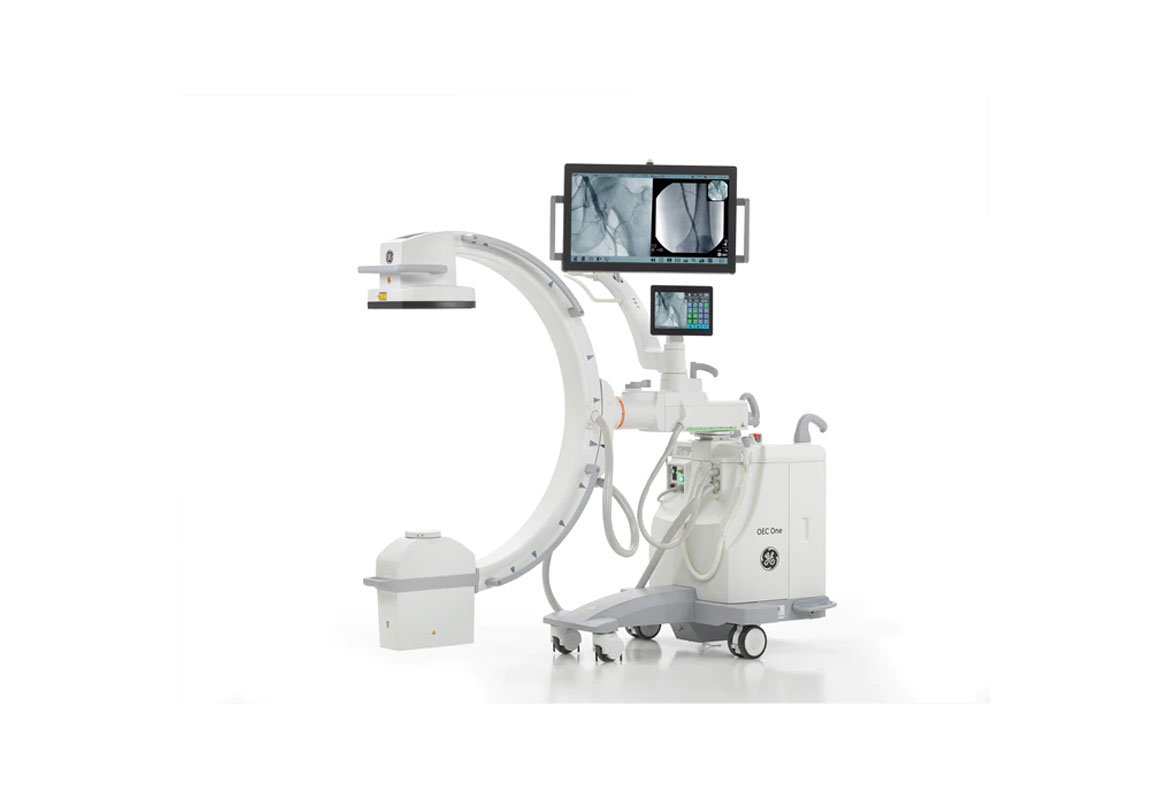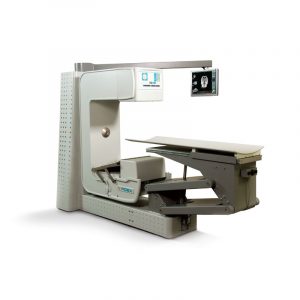Description
The OEC One all-in-one mobile C-arm goes beyond providing the exceptional image quality you expect from OEC C-arms – images how you need them. OEC One also creates greater visibility of images where needed and quick image adjustment when needed. This is OEC One’s Clear View – bringing you images where, when, and how you need them.

A Clear View WHEN you need it.
Synchronized image viewing
Effective communication and timely delivery on clinical expectations are facilitated by the synchronized view of the live image on both the primary image display monitor and TechView tablet. A gallery of procedural images, exhibited on OEC One’s Mini ID Panel, can also be viewed on both the image display and TechView tablet when accessed from the tablet with the touch of a button. Easily compare images as needed during the procedure.
Control at tablet
Get the image you need when you need it, thanks to OEC One’s TechView tablet. The TechView tablet’s interface is designed to provide image adjustment and mode switching* right at the
system. Adjust image generation, image display, X-ray technique, and vascular preferences* simply through one-button touches and finger slides on swipeaccessible screens. Using the Fluorostore button* after fluoro is released, review and save the most recent 240 frames of an unsaved acquisition, potentially minimizing retakes and eliminating unnecessary additional exposure.
Fast access
OEC One is easily positioned using handles that run the full length of the C-arm on both sides. Align anatomy with additional precision using OEC One’s laser aimers.* Get a Clear View of the patient even when anatomy is not centered, thanks to AutoTrak and Auto Brightness Stabilization image processing software. Guide vascular instruments within vessels utilizing Roadmap-2 obtained directly from Subtraction without interim steps required of the tech, thanks to OEC One’s automated vascular software.* OEC One can be easily transported to other rooms with five minute standby.
A Clear View HOW you need it. Across procedural settings.
Point-and-shoot for sharp IQ
Standard Offering
Get the images you need without adjusting system settings from the first shot to the last shot with OEC One’s combination of a compact generator, high resolution camera, image intensifier, and OEC image processing software. OEC One utilizes automatic intelligence software to sense anatomy and provide high quality imaging at optimal mA and kV levels, even when anatomy is not properly centered in the field of view.
Vascular Offering*
See fine detail such as a guidewire as small as 0.014” for peripheral vascular and thoracic regions and the sharp edge of a vessel in angiography when using OEC One’s Roadmap. OEC One’s vascular software is designed to reduce lag to allow for accuracy in placing a guidewire, catheter, balloon or stent. When using Subtraction, OEC One is optimized to reduce noise while excluding background anatomy from an image following contrast injection to allow better visualization of the vessel. This may be particularly helpful while imaging blood vessels for angiography and fistulagrams to visualize clots, aneurysm and stenosis.
Clinical preference
Obtain clinical images according to your preference, right at the OEC One system. Image orientation, image intensifier field size, collimation, brightness and contrast, imaging modes, and more can all be easily accessed from the TechView tablet and quickly delivered to your live image view.
See more images
See three images simultaneously with OEC One’s pain management and vascular software*: Real-time subtracted and unsubtracted images and a reference image from earlier
in the procedure. The simultaneous display of the unsubtracted, reference, and subtracted live image allows you the opportunity to view more detail to assess the current status of the anatomy in reference to earlier in the procedure.
Manage dose
For dose management, adjust kV and mA or select pre-defined fluoro modes – low dose, pulsed fluoro, or HLF – on the TechView tablet right at the OEC mainframe. OEC One’s X-ray footswitch and handswitch also provide flexibility in controlling X-ray generation.



